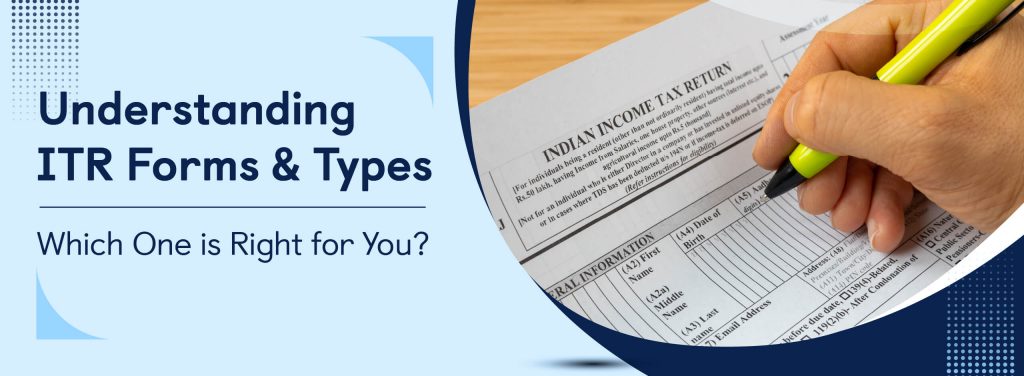Buy, sell and find just about anything using the app on your mobile.

Filing ITR correctly ensures your compliance with tax laws along with the accuracy of your tax calculations. The process of filing ITR sounds intimidating and a daunting task, but gaining a clear understanding of the process and different types of ITR forms can ease the process. There are 7 types of ITR forms tailored according to the differing levels of income of every taxpayer. This blog aims to help you understand different types of ITR forms and guide you through determining which is the right one for you. For professional assistance in filing your ITR, you can search for expert services here.
Here are 7 types of ITR forms along with their specifications to help you understand which ITR to file as per your eligibility.
Understanding ITR Forms
Let’s break down the different types of ITR forms:
*ITR 6 has to be filed electronically only
| ITR Form | Who Should Use It | Who Should Avoid It |
| ITR 1 (Sahaj) | Salary, pension or one house property income | More than one house property |
| ITR 2 | More than one property | Capital gains or business/profession income |
| ITR 3 | Business or profession income | Partnership income |
| ITR 4 (Sugam) | Presumptive income | Salary, pension, house property (up to ₹50 lakh) |
| ITR 5 | LLPs, Artificial Juridical Person, Body of Individuals or Association of Persons | Those filing ITR 7 form |
| ITR 6 | Companies not claiming exemption under Section 11 | Companies claiming exemption under Section 11 |
| ITR 7 | Companies and persons required under specific sections of the Income Tax Act | Salaried income |
The selection of the right ITR form is dependent on your income source, taxpayer category, and residency status. Here are some tips to guide you:
Tax season can be stressful and complicated, filing the correct ITR form is essential to avoid the hassle and unnecessary scrutiny from income tax authorities. It is crucial to be aware about the types of ITR forms available and under which income condition they can be filled. Knowing and filing the correct ITR form ensures that you’re taking advantage of the appropriate deductions. There are 7 different types of ITR forms designed to meet your income category whether you’re a salaried individual or business owner, specific ITR forms are there for you. Make sure to review your financial details and choose the form that best fits your situation.
Happy filing, and may your tax season be smooth and hassle-free!
Filing the correct ITR form ensures compliance with tax laws and accurate tax calculations, it also helps in avoiding penalties and taking advantage of relevant deductions.
It means that you can pay your tax on presumptive income, i.e., you don’t have to maintain a detailed account to pay tax. You can pay tax at a prescribed rate without estimating your income by deducting expenses from revenue.
Partnership firms should file ITR-5.
NRIs should use forms other than ITR-1, such as ITR-2 or ITR-3, depending on their income sources.
Identify your income sources, taxpayer category, residency status, and specific requirements to choose the appropriate form.